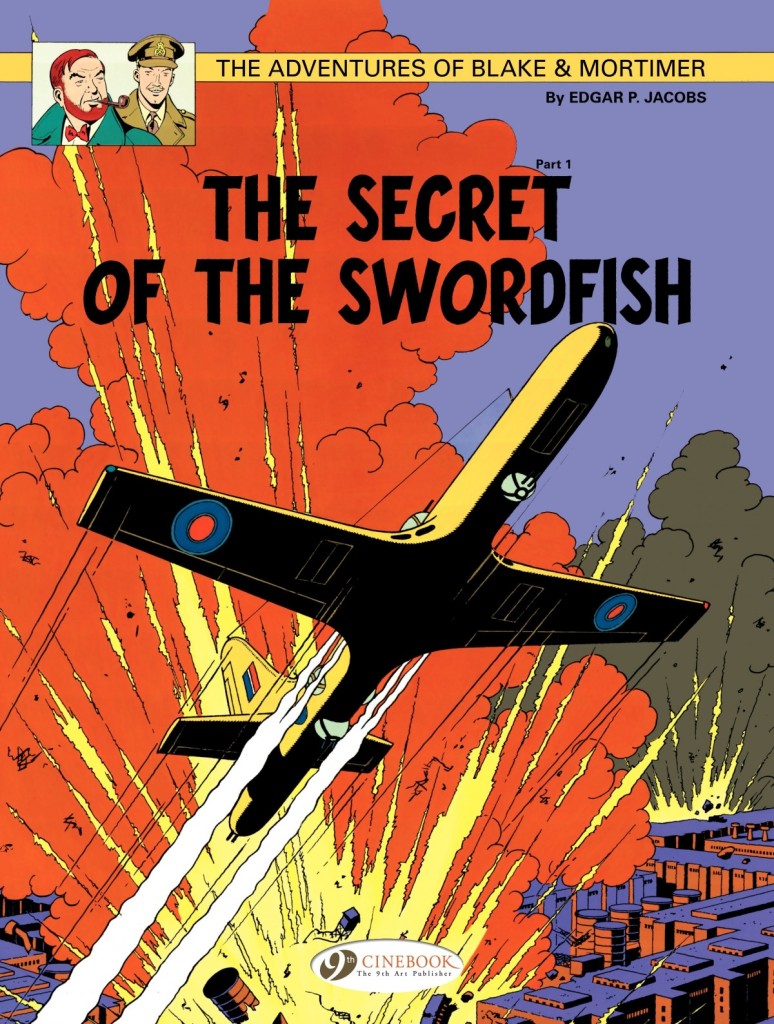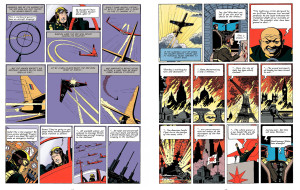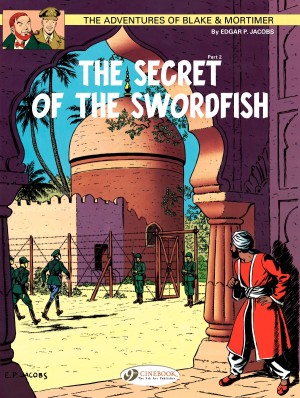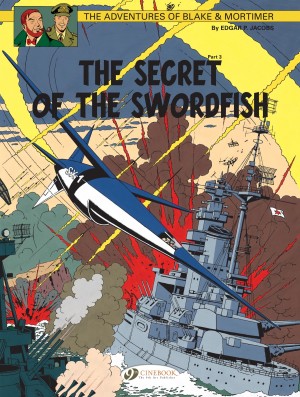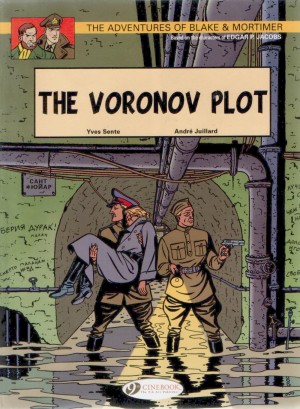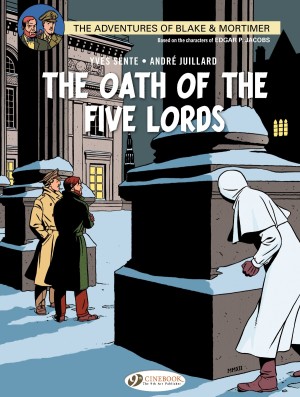Review by Woodrow Phoenix
Edgard Félix Pierre Jacobs (1904-1987) aka Edgar P. Jacobs, was one of the greatest exponents of the Franco-Belgian ‘clear line’ style of comics, rivalling Hergé in popularity and influence on the post-war European comics industry. His giant reputation rests on a relatively small body of work, with only eight stories (in eleven albums) of Blake and Mortimer between 1947 and 1987, plus The U-Ray, revised and published in Tintin Magazine in 1974.
In the late 1930s Jacobs was an illustrator who went from book and magazine work to writing and drawing a French version of the Flash Gordon newspaper strip, after foreign creators were banned by the Nazis. Stormer Gordon was a copy of Alex Raymond’s style and after that was banned too, Jacobs filled the void with his own original science-fiction adventure strip instead. Le Rayon U (The U-Ray), appeared in 1943 and was a big success. Jacobs then went on to work with Hergé, initially on modifications to previous Tintin books being prepared for colour re-issue, adding numerous well-designed decorative flourishes. He also began a new project, and in 1946 his new solo strip appeared alongside Hergé’s in Le Journal de Tintin (Tintin Magazine), published weekly in Belgium, France and Holland.
The Adventures of Blake & Mortimer is a serial introduced in the first issue of Tintin Magazine. Surprisingly, the title characters are both British. Captain Francis Blake is a blonde, moustached Englishman, head of MI5 and Professor Philip Mortimer a gruff red-bearded Scot, a top nuclear physicist and engineer. Their adventures take place in a meticulously researched 1940s and 1950s Britain, accurately portrayed except for the fantastical science-fiction elements that make the strip a kind of alternate history. The combination of old-fashioned, stiff-upper-lip heroism with futuristic menaces such as atomic rockets, death-rays, time travel and flying saucers made the two heroes enormously popular.
None of Jacobs’ work was translated into English until the 1980s. For this series Cinebook chose titles out of sequence, reprinting the best books first. The Secret of the Swordfish is the first Blake and Mortimer story, but the fifteenth volume to be published. It’s certainly nowhere near as polished as later books, but fans of the series will enjoy it.
The Secret of the Swordfish part one, ‘The Incredible Chase’ begins briskly. Basam Damdu, Emperor of Tibet and leader of a secret army in the Himalayas, launches a fleet of technologically super-advanced bombers in a global blitzkrieg against the capital cities of Earth. By page eleven, World War Three is underway. Bombay, Rome, Paris and London are in ruins, the US Pacific fleet is sunk and the planet is in the hands of The Yellow Empire. Professor Philip Mortimer has invented a radical aircraft engine that could turn the tide of war in Britain’s favour but will he get the chance to put it into action? Mortimer and Blake’s rocket jet is shot down over the Middle East, and they need the help of heroic local fighters to reach a secret rendezvous, beneath the noses of the Imperial army.
It’s classic Boy’s Own Adventure with all the paternal colonialism typical of the 1940s, but Jacobs is surprisingly progressive in other areas, when compared to Hergé and other contemporaries. He sets his action in exotic locations but avoids racial stereotyping, giving equally heroic characterisations to all the players in his cast, and indeed using far more non-white protagonists in one story than Hergé in any ten books combined. The text is stilted and excessively overwritten, but Jacobs’ drawing is expertly dramatic, and the story entertains. The action halts on a cliffhanger, to be continued in part two, ‘Mortimer’s Escape‘.
